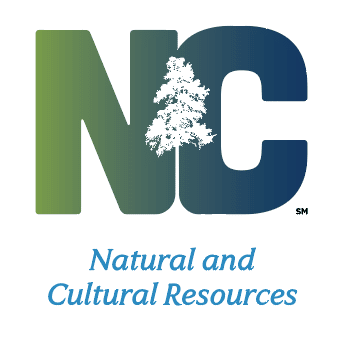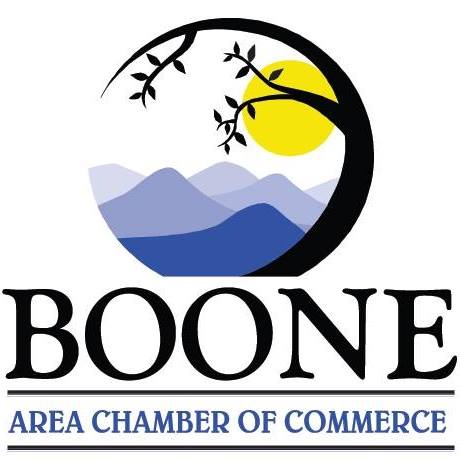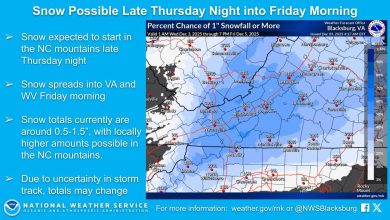
Last Updated on December 11, 2023 4:09 pm
The N.C. Division of Parks and Recreation announced end-of-year funding today totaling more than $13 million that will benefit both local and state parks through federal and state funds.
The North Carolina Parks and Recreation Authority has approved $3.45 million in land acquisition and $3.5 million in capital improvement projects for state parks across the state. The $6.95 million in combined funding is a portion of the annual allocation for state parks from the North Carolina Parks and Recreation Trust Fund.
The land acquisition projects will add nearly 450 acres combined to Chimney Rock, Elk Knob, Lumber River, Medoc Mountain, and Merchants Millpond state parks. Most of the projects address important conservation needs outlined in the division’s land protection plan. Other projects will allow the division to build the necessary infrastructure to support state park operations. Meanwhile, most of the capital improvement funding is earmarked for various repairs and renovations across the state parks system. The Parks and Recreation Trust Fund is administered through the state’s Division of Parks and Recreation.
“The state parks allocation from the Parks and Recreation Trust Fund is critical in conserving the state’s spectacular natural areas and providing outdoor recreation and educational opportunities across our state,” said D. Reid Wilson, secretary of the N.C. Department of Natural and Cultural Resources. “We appreciate the strong funding support from the General Assembly and Governor Roy Cooper.”
The land acquisition projects are:
• $230,000 for Chimney Rock State Park to purchase a tract in Rutherford County
• $330,000 for Elk Knob State Park in Watauga County to protect high-value conservation land along the eastern rim of Long Hope Valley
• $719,000 for Lumber River State Park in Robeson County to protect forested areas along the river near the Wire Pasture Access
• $471,000 for Medoc Mountain State Park in Halifax County to conserve land that will protect water quality along Bear Swamp Creek and Little Fishing Creek, the latter considered one of the most biologically diverse rivers in the state’s Coastal Plain
• $1.7 million for Merchants Millpond State Park in Gates County for land acreage that will connect the visitor center and campground areas, house operations support facilities, and allow for improved natural resource management
The capital improvement projects are:
• $500,000 for Hammocks Beach State Park in Onslow County to address structural concerns and improve educational exhibits at the visitor center
• $3 million for major maintenance projects across the state parks system
Four local parks and recreation projects received grants through the federal Land and Water Conservation Fund as part of the state’s annual allocation from that fund.
The LWCF grant recipients, who will each receive $500,000, are:
• The town of Summerfield in Guilford County for Bandera Farms Park
• Cleveland County Water and the town of Lawndale for Lawndale Park
• The city of Lowell in Gaston County for Harold Rankin Park
• The city of Rocky Mount for Sunset Park
The state parks division also received two LWCF awards: a $250,000 Planning Grant and a $195,805 Administration Grant.
“We are pleased that the division also received LWCF grants for planning and administration,” said Division Director Brian Strong. “The division will use the planning grant in our efforts to develop the State Comprehensive Outdoor Recreation Plan for 2025-2030, which is necessary for North Carolina to remain eligible for LWCF funding. The administration grant will help the division transition to an improved online grants application and administration process.”
In addition to the state’s LWCF annual allocation, the city of Greensboro was also selected as the recipient of a $4.3 million grant for Nocho Park from the National Park Service’s Outdoor Recreation Legacy Partnership program, a highly selective grant funded through the LWCF. Greensboro’s project is one of five local projects across the country chosen for this grant, which was announced in October.
About the Land and Water Conservation Fund (LWCF)
The Interior Department, through the National Park Service (NPS), apportions annual LWCF funding to each state, and North Carolina’s allotment is administered by the N.C. Division of Parks and Recreation. Applicants can request a maximum of $500,000 with each application. Recipients must match the grant with a minimum of 50 percent. The division reviews and scores applications based on standardized criteria and recommends the highest-ranked projects to the NPS for funding.
About the North Carolina Parks and Recreation Trust Fund (PARTF)
Established in 1994, PARTF provides a dedicated funding source for improvements in state parks, matching grants for local parks, and public access to the state’s beaches and estuaries. PARTF is funded by annual appropriations from the General Assembly as well as revenue from personalized license plates. The Parks and Recreation Authority, a nine-member citizen board, allocates PARTF funds for projects in state parks and for grants to local governments to purchase parkland and build facilities for public recreation.
About North Carolina State Parks
North Carolina State Parks manages more than 250,000 acres of iconic landscape within North Carolina’s state parks, state recreation areas and state natural areas. It administers the N.C. Parks and Recreation Trust Fund, including its local grants program, as well as a state trails program, North Carolina Natural and Scenic Rivers and more, all with a mission dedicated to conservation, recreation and education. The state parks system welcomes more than 19 million visitors annually.
About the North Carolina Department of Natural and Cultural Resources
The N.C. Department of Natural and Cultural Resources (DNCR) manages, promotes, and enhances the things that people love about North Carolina – its diverse arts and culture, rich history, and spectacular natural areas. Through its programs, the department enhances education, stimulates economic development, improves public health, expands accessibility, and strengthens community resiliency.
The department manages over 100 locations across the state, including 27 historic sites, seven history museums, two art museums, five science museums, four aquariums, 35 state parks, four recreation areas, dozens of state trails and natural areas, the N.C. Zoo, the N.C Symphony, the State Library, the State Archives, the N.C. Arts Council, the African American Heritage Commission, the American Indian Heritage Commission, the State Historic Preservation Office, the Office of State Archaeology, the Highway Historical Markers program, the N.C. Land and Water Fund, and the Natural Heritage Program. For more information, please visit www.ncdcr.gov.

















